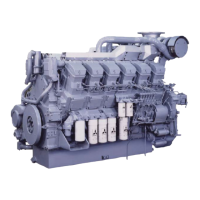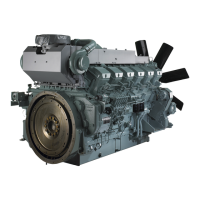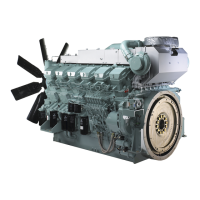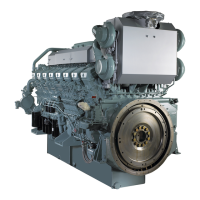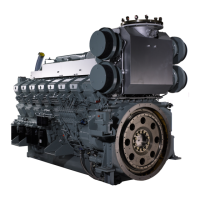Chapter 4 MAINTENANCE
4-8
Importance of LLC
Today's trend is toward smaller and more light-
weight engines offering greater output, lower fuel
consumption and lower exhaust emission level.
Conditions to which engine coolant is subjected are
becoming severer due to longer operating hours,
higher coolant temperature and higher coolant cir
-
culating speed.
Many different materials (such as steel, aluminum,
copper, solder and rubber) are used in the cooling
system, and they are also subjected to the severe
conditions described above.
These materials differ in ionizing tendency, and this
difference promotes corrosion through the medium
of engine coolant.
To prevent the above problem, it is necessary to
use LLC (long life coolant).
Characteristics of LLC Additive
and Important Notes
LLC contains several chemicals in such proportions
as to produce chemical reactions that suppress
corrosion (ionization) of engine parts in contact with
the coolant.
LLC loses its effectiveness after many months of
use.
Moreover, if the chemicals are not well propor-
tioned to match the metals used in the cooling sys-
tem, certain chemicals in the LLC become rapidly
used up and result in dissolving of metals.
Moreover, other corrosion preventing chemicals
react with dissolving metals and further accelerate
corrosion. This condition can result in more corro
-
sion than when plain soft water is used. This prob-
lem is often caused by the use of inappropriate
LLC.
Examples of Abnormalities
Caused by LLC
Pitting on iron parts
Amines are generally effective in suppressing the
rusting of ferrous metals, but they are said to cause
problems for copper parts.
Dissolved copper (copper corrosion) in the cooling
system deposits on iron parts, and copper deposits
produce galvanic or local-cell action, thus corroding
and pitting iron that has a higher ionizing tendency.
Corrosion of aluminum parts
Silicate is highly effective in protecting aluminum
against rusting. However, it is unstable in a solution
in which pH is 9 or lower, and can turn to gel and
precipitate in the solution. For this reason, the pH is
usually specified to be about 10 to ensure a high
alkaline level.
This means, after silicate is used up, the high alka-
linity causes chemical attacks on aluminum. To pre-
vent this problem, proper maintenance of the
coolant is required.
(Example)
Rapid wear of mechanical seals in the water pump
due to secondary effects of silicate gel formed.
Corrosion of aluminum parts after silicate is con-
sumed.
Pitting and clogging of radiator
As LLC's general performance deteriorates or
when its concentration in the coolant is too low, its
anti-corrosion performance lowers and results in
the corrosion of metals.
Brass and solder tend to corrode faster than other
metals, and corrosion of these metals is said to
cause water leakage and clogs.
(Example)
Holes and clogs in radiator
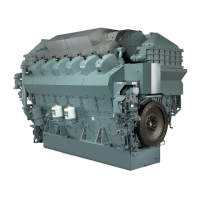
